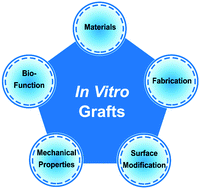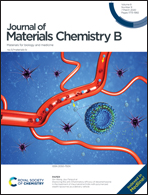Artificial small-diameter blood vessels: materials, fabrication, surface modification, mechanical properties, and bioactive functionalities
Abstract
Cardiovascular diseases, especially ones involving narrowed or blocked blood vessels with diameters smaller than 6 millimeters, are the leading cause of death globally. Vascular grafts have been used in bypass surgery to replace damaged native blood vessels for treating severe cardio- and peripheral vascular diseases. However, autologous replacement grafts are not often available due to prior harvesting or the patient's health. Furthermore, autologous harvesting causes secondary injury to the patient at the harvest site. Therefore, artificial blood vessels have been widely investigated in the last several decades. In this review, the progress and potential outlook of small-diameter blood vessels (SDBVs) engineered in vitro are highlighted and summarized, including material selection and development, fabrication techniques, surface modification, mechanical properties, and bioactive functionalities. Several kinds of natural and synthetic polymers for artificial SDBVs are presented here. Commonly used fabrication techniques, such as extrusion and expansion, electrospinning, thermally induced phase separation (TIPS), braiding, 3D printing, hydrogel tubing, gas foaming, and a combination of these methods, are analyzed and compared. Different surface modification methods, such as physical immobilization, surface adsorption, plasma treatment, and chemical immobilization, are investigated and are compared here as well. Mechanical requirements of SDBVs are also reviewed for long-term service. In vitro biological functions of artificial blood vessels, including oxygen consumption, nitric oxide (NO) production, shear stress response, leukocyte adhesion, and anticoagulation, are also discussed. Finally, we draw conclusions regarding current challenges and attempts to identify future directions for the optimal combination of materials, fabrication methods, surface modifications, and biofunctionalities. We hope that this review can assist with the design, fabrication, and application of SDBVs engineered in vitro and promote future advancements in this emerging research field.



 Please wait while we load your content...
Please wait while we load your content...